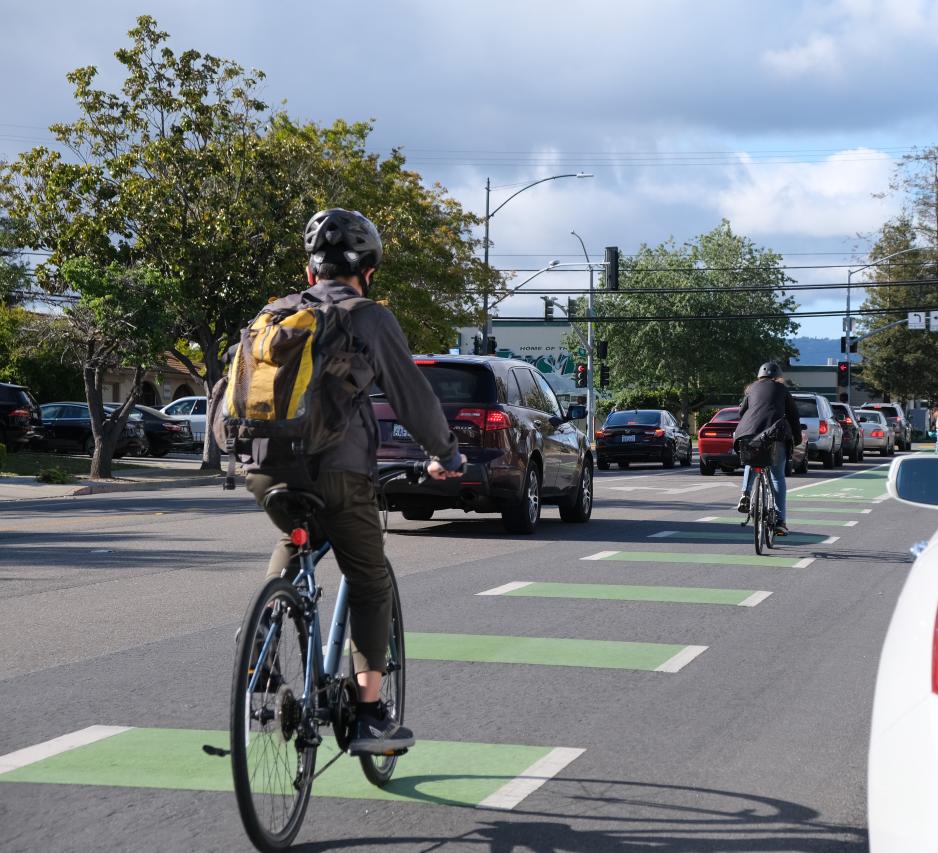Conduct VMT and multimodal assessments to inform the implementation of transportation and streetscape improvements.
A multimodal assessment can add insights as to what kinds of pedestrian, bicycle, and transit improvements can be made to enhance the travel environment beyond automotive travel.
- Investigate multimodal indicators such as sidewalk continuity, condition, and width, pedestrian crossings, bicycle lanes, street trees, bus stop amenities, bus priority lanes, and other street elements.
- Identify improvements that a proposed development may fund in order to increase the use of alternative modes and reduce VMT and Greenhouse Gas (GHG) emissions rather than increase single occupant vehicular capacity.
- Explore new mechanisms to pay for transportation infrastructure that are not dependent on Level of Service (LOS). For example, transportation fee programs can be updated to relate to VMT or multimodal performance, and developer contributions, community benefits funding and grants can be pursued.
Body
